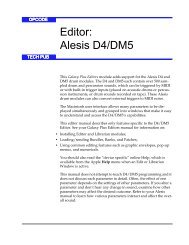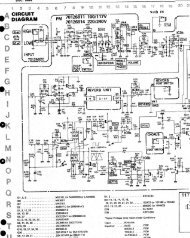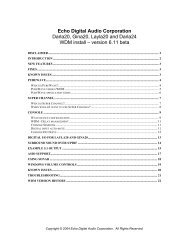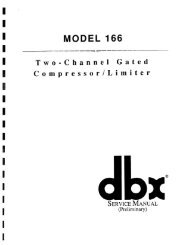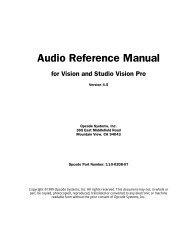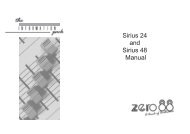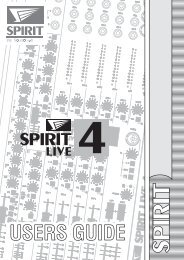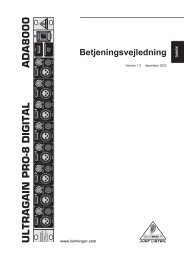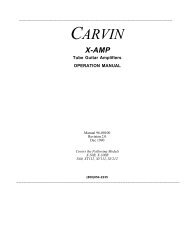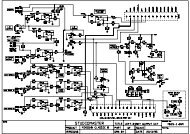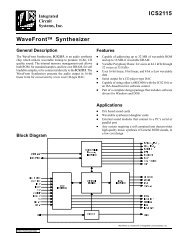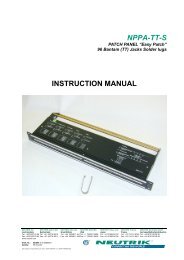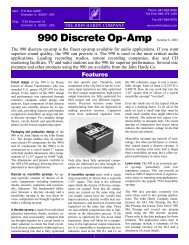Crystal - cs5336.pdf
Crystal - cs5336.pdf
Crystal - cs5336.pdf
You also want an ePaper? Increase the reach of your titles
YUMPU automatically turns print PDFs into web optimized ePapers that Google loves.
CS5336, CS5338, CS5339<br />
with the ADC straddling the boundary. All signals,<br />
especially clocks, should be kept away from<br />
the VREF pin in order to avoid unwanted coupling<br />
into the modulators. The VREF decoupling<br />
capacitors, particularly the 0.1 µF, must be positioned<br />
to minimize the electrical path from VREF<br />
to Pin 1 AGND and to minimize the path between<br />
VREF and the capacitors. An evaluation board is<br />
available which demonstrates the optimum layout<br />
and power supply arrangements, as well as allowing<br />
fast evaluation of the ADC.<br />
To minimize digital noise, connect the ADC digital<br />
outputs only to CMOS inputs.<br />
Synchronization of Multiple CS5336/8/9<br />
In systems where multiple ADC’s are required,<br />
care must be taken to insure that the ADC internal<br />
clocks are synchronized between converters to insure<br />
simultaneous sampling. In the absence of this<br />
synchronization, the sampling difference could be<br />
one ICLKD period which is typically 81.4 nsec<br />
for a 48 kHz sample rate.<br />
SLAVE MODE<br />
Synchronous sampling in the slave mode is<br />
achieved by connecting all DPD and APD pins to<br />
a single control signal and supplying the same<br />
ICLKD and L/R to all converters.<br />
PERFORMANCE<br />
FFT Tests<br />
For FFT based tests, a very pure sine wave is presented<br />
to the ADC, and an FFT analysis is<br />
performed on the output data. The resulting spectrum<br />
is a measure of the performance of the ADC.<br />
Figure 7 shows the spectral purity of the CS5336<br />
with a 1 kHz, -10 dB input. Notice the low noise<br />
floor, the absence of any harmonic distortion, and<br />
the Dynamic Range value of 95.41 dB.<br />
Figure 8 shows the CS5336 high frequency performance.<br />
The input signal is a -10 dB, 9 kHz<br />
sine wave. Notice the small 2nd harmonic at<br />
110 dB down.<br />
Figure 9 shows the low-level performance of the<br />
CS5336. Notice the lack of any distortion components.<br />
Traditional R-2R ladder based ADC’s can<br />
have problems with this test, since differential<br />
non-linearities around the zero point become very<br />
significant. Figure 10 shows the same very low<br />
input amplitude performance, but at 9kHz input<br />
frequency.<br />
MASTER MODE<br />
The internal counters of the CS5336/8/9 are reset<br />
during DPD/APD high and will start simultaneously<br />
by insuring that the release of DPD/APD<br />
for all converters is internally latched on the same<br />
rising edge of ICLKD. This can be achieved by<br />
connecting all DPD/APD pins to the same<br />
control signal and insuring that the DPD/APD<br />
falling edge occurs outside a ±30 ns window<br />
either side of an ICLKD rising edge.<br />
3-50 DS23F1



